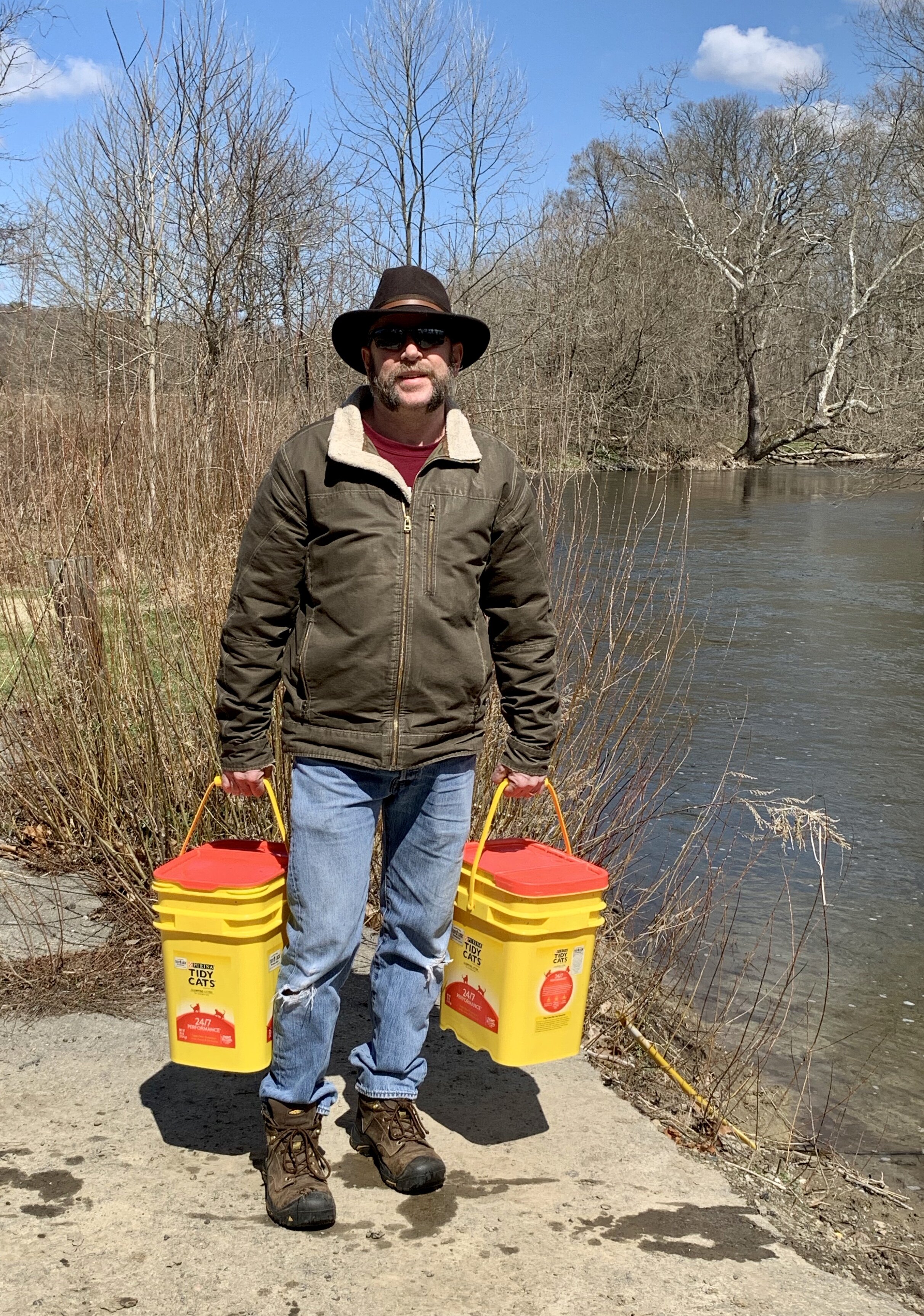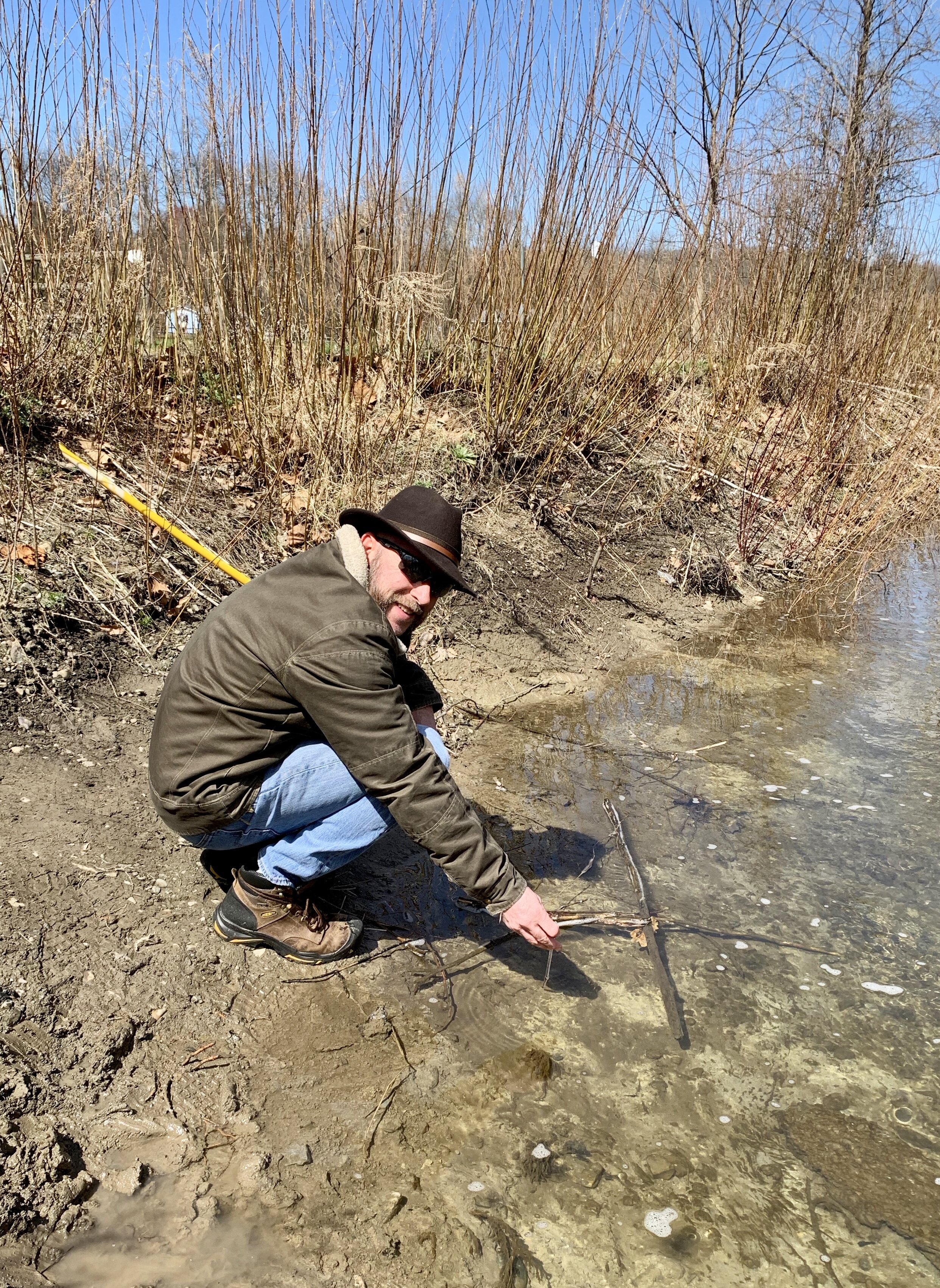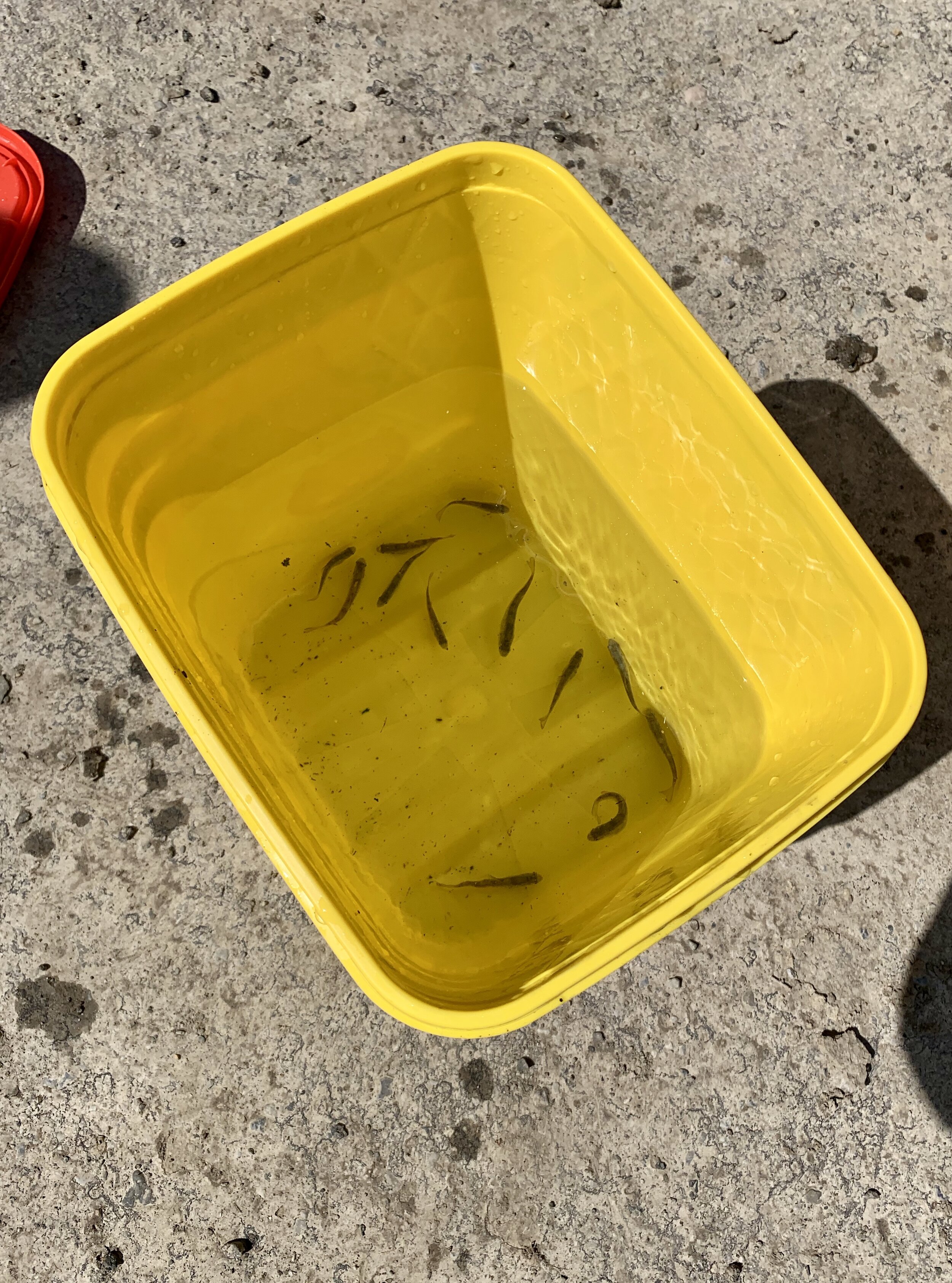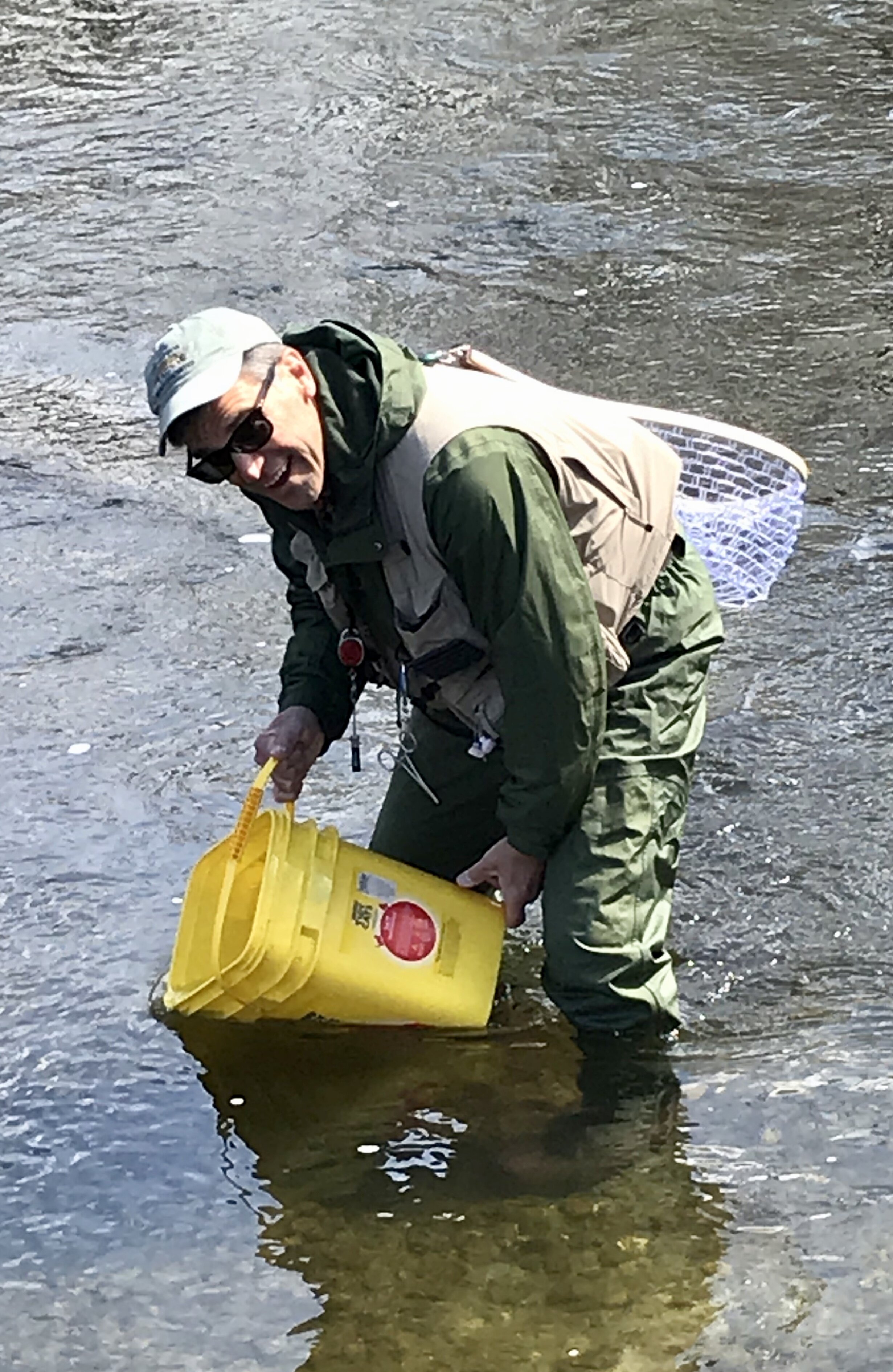They Put the Fish in Fishkill Creek
Beacon fifth graders help restock trout
By Joey Asher
If you saw 37 fifth graders marching with fish signs down Churchill Street in Beacon on May 16, they were off to release 60 trout friends into Fishkill Creek.
The children, who attend South Avenue Elementary, had given the 3-inch brown trout names like Holiday, Jeremy, Jeff, Billy Bigback, Patricia Felicia Petunia, Little Jim Bob and Li’l Shoddy.
It was the culmination of an eight- month school project about trout, their habitat and conservation, and the impor- tance of caring about nature.
“Why would you care about the envi- ronment if you’re not connected to it in any way?” asked Aaron Burke, the school librarian who runs the project. “This is a way to help make that connection. Every time they drive over that bridge, they’ll think, ‘I wonder if Fred is in there.’ ”
Students in 5,000 schools nationwide and more than 350 in New York are conducting similar releases as part of Trout in the Classroom, a program organized each spring for more than 30 years by the conservation group Trout Unlimited.
“The big goal of the program is to create this connection with students in their watershed and their drinking water,” said Cecily Nordstrom, the nonprofit’s stream education manager.
Burke has worked with Trout in the Classroom for five years and starts each fall with a small jar of trout eggs hatched in an aquarium in the school library. He gets the eggs from the state Department of Environmental Conservation. The DEC uses the same stock in hatcheries that annually produce 2 million trout to stock streams and lakes.
The state adds 6,100 brown trout each spring to Fishkill Creek, which starts in Union Vale and flows 33 miles through Dutchess County before passing through Beacon and emptying into the Hudson River. About 90 percent of those trout are 9-inch yearlings.Starting in 2020, about 10 percent of stocked trout were 13-inch two-year-olds, giving anglers “a shot at catching one of those nice larger fish,” said Fred Henson, the DEC’s cold water fisheries leader.
Henson explained that Fishkill Creek is a “put-and-take” fishery, which means the fish are put in the stream and quickly taken out by anglers fishing in places like Madam Brett Park off Tioronda Avenue. Stocked trout rarely survive to reproduce.
Without stocking in Fishkill Creek, Henson said, “you wouldn’t have a fishery.”
Development along streams like Fishkill Creek undermines the clean, cold water needed for trout to thrive, he said. As with many waterways in developed areas, storm water runoff pollutes the creek and fewer trees leads to rising water temperatures.
Henson said that the state reduced stocking last year in Beacon’s section of Fishkill Creek to 400 trout because fewer property owners allow fishing. Until 2023, the state was stocking the section with 1,100 brown trout, he said.
“As more and more large properties are subdivided and development increases in the Hudson Valley and in Dutchess County, we’re limited by landowners who are unwilling to let the public access trout streams for recreation,” said Henson.
The South Avenue Elementary release was at a public greenway behind the Hudson Valley Brewery. Burke had a table top model of a watershed to show how development impacts a waterway. Teachers led scavenger hunts while children took turns releasing trout.
Mark Jones, a board member of the Mid- Hudson chapter of Trout Unlimited, was there to teach fly casting. While most of its members are anglers, Jones emphasized that his chapter’s mission is “to show the importance of stream preservation.” On Fishkill Creek, he said the chapter has done clean-ups and tree plantings that reduce bank erosion.
April Stark, another member of the Mid- Hudson chapter, demonstrated fly tying and explained that a river with healthy bugs produces healthy trout. “Trout only live in good, clean water,” she said. “So, when you see trout who are able to thrive without being stocked, you know the water is good, un-polluted water.”
What is Trout in the Classroom?
Trout in the Classroom (TIC) is an environmental education program in which students in grades K-12
raise trout from eggs to fry, monitor tank water quality, and engage in stream habitat study.
In Dutchess County, NY, nine (9) schools are currently participating in this program.
They are:
Arlington High School
Dutchess Day School
John Jay High School
Millbrook Middle School
Our Lady of Lourdes High School
Pawling Central Middle School
Poughkeepsie High School
Vail Farm Elementary School
Wappingers Junior High School
If you are interested, or would like more information about the TIC Program, check out the following websites:
Trout in the Classroom - DEP - NYC.gov
Trout in the Classroom | Trout Unlimited
Still have questions? Please contact April Stark, apiejo@optonline.net
From Pat Crisci, MHTU President: If you have not seen this, here is a great story, from Opening Day. Thank you for sharing it Mike Matts.
"Staying close to home on this Opening Day (4/1/20), I stopped to fish the Wappingers Creek. As I'm fishing, someone from behind me asks if I know what the water temp is. Turns out, he is Mark Angevine, an Environmental Science teacher from Poughkeepsie High School, who stopped by to release fingerling trout from his Trout in the Classroom project. He was called today, and given 30 minutes to come in to school to get the trout so they could be released. (Obviously, he couldn't bring any students along, due to COVID-19 concerns.)
The Creek water temperature was 48 deg F, about 4 degrees cooler than the tanks at school. He had no waders, so I helped him by adding/ subtracting water in the 2 buckets to acclimate the trout before releasing them. He said his class was given 50 eggs, from which 20 grew to fingerling size.
Mark had wanted to release the trout with his class and combine it with a tutorial on fly fishing, a casting demo, and fishing in the creek. I mentioned that TU would be available to help with instruction at a later date. I have his contact information, we'll see if that's possible in the future.
A good way to start the season. I even got to "stock" some trout."
Kudos to Mark for teaching his class the importance (and fun) of raising trout and preparing the next generation of environmentalists.





